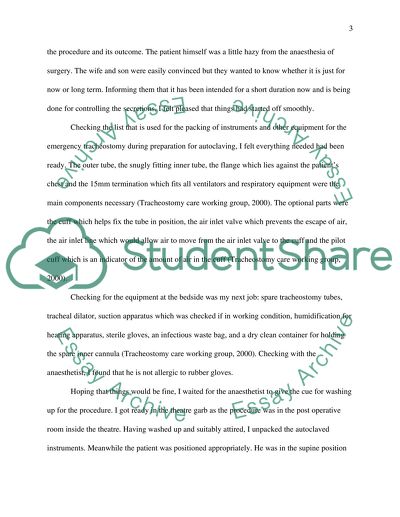Cite this document
(Reflections I Experienced While Assisting in a Tracheostomy Essay, n.d.)
Reflections I Experienced While Assisting in a Tracheostomy Essay. Retrieved from https://studentshare.org/health-sciences-medicine/1560266-a-clinical-incident
Reflections I Experienced While Assisting in a Tracheostomy Essay. Retrieved from https://studentshare.org/health-sciences-medicine/1560266-a-clinical-incident
(Reflections I Experienced While Assisting in a Tracheostomy Essay)
Reflections I Experienced While Assisting in a Tracheostomy Essay. https://studentshare.org/health-sciences-medicine/1560266-a-clinical-incident.
Reflections I Experienced While Assisting in a Tracheostomy Essay. https://studentshare.org/health-sciences-medicine/1560266-a-clinical-incident.
“Reflections I Experienced While Assisting in a Tracheostomy Essay”. https://studentshare.org/health-sciences-medicine/1560266-a-clinical-incident.


